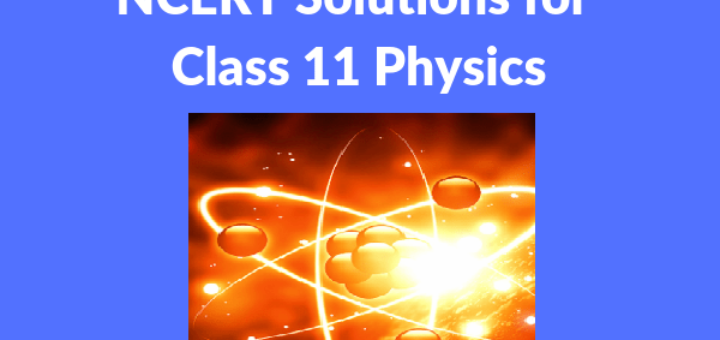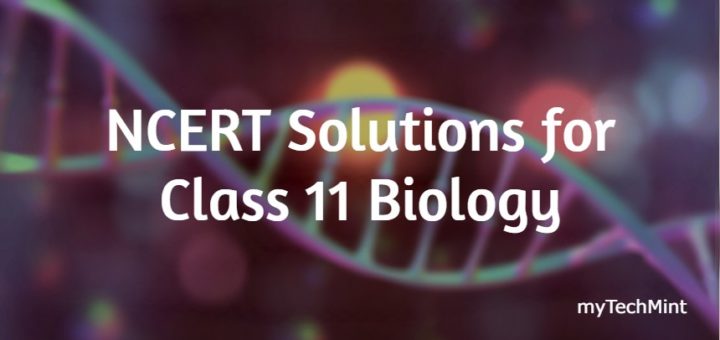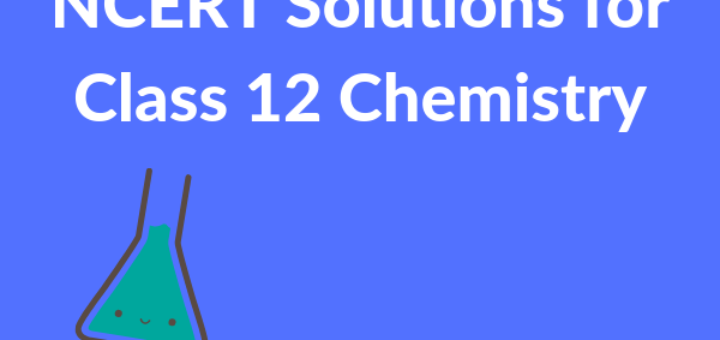Topics and Subtopics in NCERT Solutions for Class 12 Biology Chapter 6 Molecular Basis of Inheritance:
| Section Name | Topic Name |
| 6 | Molecular Basis of Inheritance |
| 6.1 | The DNA |
| 6.2 | The Search for Genetic Material |
| 6.3 | RNA World |
| 6.4 | Replication |
| 6.5 | Transcription |
| 6.6 | Genetic Code |
| 6.7 | Translation |
| 6.8 | Regulation of Gene Expression |
| 6.9 | Human Genome Project |
| 6.10 | DNA Fingerprinting |
| 6.11 | Summary |
QUESTIONS FROM TEXTBOOK SOLVED
1.Group the following as nitrogenous bases and nucleosides: Adenine, Cytidine, Thymine, Guanosine, Uracil and Cytosine.
Ans. Nitrogenous Bases – Adenine, Uracil and Cytosine, Thymine; Nucleosides – Cytidine, guanosine.
2.If a double stranded DNA has 20 per cent of cytosine, calculate the per cent of adenine in the DNA.
Ans. In a DNA molecule, the number of cytosine molecule is equal to guanine molecules & the number of adenine molecules are equal to thymine molecules. As a result, if a double stranded DNA has 20% of cytosine, it has 20% of guanine. The remaining 60% includes both adenine & thymine which are in equal amounts. So, the percentage of adenine is 30%.
3. If the sequence of one strand of DNA is written as follows:
5′-ATGCATGCATGCATGCATGCA
TGCATGC-3′
Write down the sequence of complementary strand in 5′ -> 3′ direction.
Ans. 5′-GCATGCATGCATGCATGCAT G C ATG CAT-3′.
4.If the sequence of the coding strand in a transcription unit is written as follows: 5-ATGCATGCATGCATGCATGCA TGCATGC-3′
Write down the sequence of mRNA.
Ans. mRNA: 5′ -A U G CAU G CAU G C AU G CA UGCAUGCAUGC-3′.
5.Which property of DNA double helix led Watson and Crick to hypothesise semi-conservative mode of DNA replication? Explain.
Ans. Complementary base pairing property of DNA double helix led Watson and Crick to hypothesise semi-conservative mode of DNA replication. Watson & Crick observed that the nitrogenous bases are in complementary pairing in two strands of double helix of DNA molecule. Such an arrangement of DNA molecule led them to hypothesize the semi conservative mode of replication of DNA.
6.Depending upon the chemical nature of the template (DNA or RNA) and the nature of nucleic acids synthesized from it (DNA or RNA), list the types of nucleic acid polymerases.
Ans.(i) DNA dependent DNA polymerase – synthesis.
(ii)DNA dependent RNA polymerase – synthesis.
(iii)RNA dependent DNA polymerase – Retroviral nucleic acid.
(iv)RNA dependent RNA polymerase – cDNA synthesis.
7.How did Hershey and Chase differentiate between DNA and protein in their experiment white proving that DNA is the genetic material?
Ans.Alfred Hershey and Martha Chase (1952) worked with viruses that infect bacteria called bacteriophages. In 1952, they chose a bacteriophage known as T2 for their experimental material.
They grew some viruses on a medium that contained radioactive phosphorus (p32) and some others on medium that contained radioactive sulphur (s35). Viruses grown in the presence of radioactive phosphorus contained radioactive DNA but not radioactive protein because DNA contains phosphorus but protem does not. Similarly, viruses grown on radioactive sulphur contained radioactive protein but not radio’active DNA because DNA does not contain sulphur.
Radioactive phages were allowed to attach to E. coli bacteria. Then, as the infection proceeded, the viral coats were removed from the bacteria by agitating them in a blender. The virus particles were separated from the bacteria by spinning them in a centrifuge. ,
Bacteria which was infected with viruses that had radioactive DNA were radioactive, indicating that DNA was the material that passed from the virus to the bacteria. Bacteria that were infected with viruses that had radioactive proteins were not radioactive. This indicates that proteins did not enter the bacteria from the viruses. DNA is therefore the genetic material that is passed from virus to bacteria.
8. Differentiate between the followings:
(a)Repetitive DNA and Satellite DNA
(b)mRNAand tRNA
(c)Template strand and Coding strand
Ans. (a) The main differences between repetitive DNA and satellite DNA are as following:
(b) The main difference between mRNA and tRNA are as following:
(c) The main difference between template strand and coding strand are as follows :
9. List two essential roles of ribosome during translation.
Ans. Two essential roles of ribiosomes during translation are ;o
(i)they provide surface for binding of mRNA in the groove of smaller sub unit of ribosome.
(ii)As larger sub unit of ribosome has peptidy transferase on its ‘P’ site, therefore, it helps in joining amino acids by forming peptide bonds. .
10.In the medium where E. coli was growing, lactose was added, which induced the lac operon. Then, why does lac operon shut down some time after addition of lactose in the medium?
Ans. Lac operon is switched on adding lactose in the medium, as lactose acts as inducer and make repressor inactive. Due to this switch on of lac operon system, (3-galactosidase is formed which converts lactose into glucose and galactose. As soon as lactose is consumed, repressor again become active and cause switch off (shut down) of system.
11.Explain (in one or two lines) the function of the followings:
(a) Promoter (b) tRNA
(c) Exons
Ans. Promoter: It is one of the three components of a transcription unit that takes part in transcription. It is located at the start 5′ end and provides site for attachment of transcription factors (TATA Box) and RNA polymerase. tRNA: It takes part in the transfer of activated amino acids from cellular pool to ribosome for their taking part in protein formation.
Exons: In eukarytoes, DNA is mosaic of exons and introns. Exons are coding sequences of DNA which are transcribed and translated both.
12.Why is the Human genome project called a mega project?
Ans. Human genome project is called a mega project because
(i)it required bioinformatics data basing and other high speed computational devices for analysis, storage and retrieval of information.
(ii)it generated lot of information in the form of sequence annotation.
(iii)it was carried out in number of labs and coordinated on extensive scale.
13.What is DNA fingerprinting? Mention its application.
Ans. DNA fingerprinting is identification of difference in specific region of DNA sequences based on DNA polymorphism, repetitive DNA and satellite DNA.
Application of DNA fingerprinting: Settling, paternity disputes and identity of criminal by different DNA profiles in forensic laboratories.
14.Briefly describe the following:
(a) Transcription (b) Polymorphism
(c) Translation (d) Bioinformatics
Ans. Transcription : It is DNA directed synthesis of RNA in which the RNA is transcribed on 3*—>5’ template strand of DNA in 5’—>3’ direction. Polymorphism: Variation at genetic level arisen due,to mutation, is called polymorphism. Such variations are unique at particular site of DNA, forming satellite DNA. The polymorphism in DNA sequences is the basis of genetic mapping and DNA finger printing.
Translation : Protein synthesis from mRNA, tRNA, rRNA.
Bioinformatics : Computational method of handling and analyzing biological databases.



